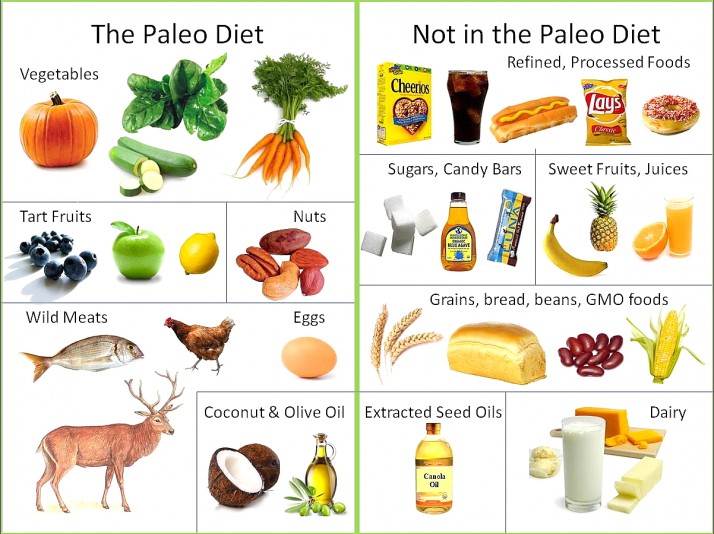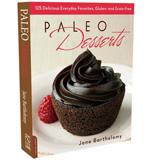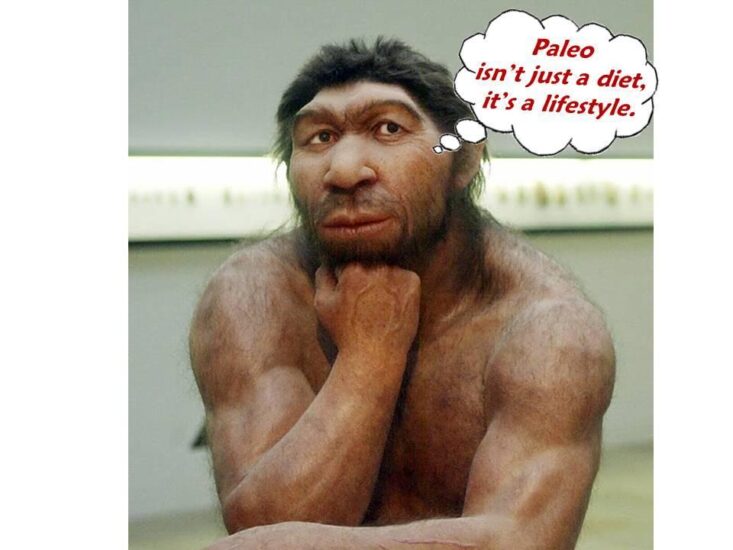By Jane Barthelemy.
As a Paleo enthusiast, I often say the approach is a lifestyle, not a diet. It’s much more than a way of eating, and it can be interpreted or adapted in your own way. The Paleo lifestyle bypasses the dangers of modern industrial foods, opting for the healthier, more sustainable ways of our primal ancestors. In doing so, it eliminates most of the common food allergens and risks of chronic disease inherent in refined carbs, sugars, and modified foods.
The Paleo diet, named for the Paleolithic period, mimics the hunt-and-gather food of our ancestors. Clearly they ate whatever they could catch, pluck, or dig up in the wild. During that stretch of 2.5 million years as humanity developed, our ancestors ate a diet that was fresh and alive. Fast food, industrial chemicals, processed carbs, sugars, preservatives, junk food, and even agriculture were unknown on the planet.

The Paleo lifestyle is simple and healthy.
It says YES to vegetables, meat, fish, poultry, nuts, seeds, tart fruits, and unprocessed fats. It says NO to refined foods, grains, dairy, beans, extracted seed oils, and sugars. The ease of the Paleo diet is refreshing. There’s no calorie counting or portion control (this part is particularly appealing). No packaged meals or special drinks. Yet the rationale behind the ancestral diet goes much deeper than physical beauty or losing weight. It’s all about respecting yourself and your body, understanding your relationship to the Earth, and achieving your true human potential. Perhaps the growing appeal of Paleo is that it recalls our true primordial power and our desire to embody wholeness in a faceless industrial world.
There are many ways to interpret the Paleo lifestyle.
Obviously our ancestors ate according to the climate they lived in. Some see Paleo as a meat diet; some view it as low in carbs. Does it include eggs or fermented dairy? How about pseudo-grains like quinoa and buckwheat? These are the details, the fine print—and they’re completely up to you. You can choose to emphasize meat, or you can even be a Paleo-vegan. You get to decide how to interpret the ancestral diet and where you draw the line. We are all unique, and the flexible Paleo template can be molded to serve many individual needs. Since there’s no counting, weighing, or portion control, the success of Paleo depends entirely on how you interpret it. This puts each of us squarely in control of our food and health.
The Paleo diet is inspired by a time when mankind ate real food.
Calories don’t nourish the body. Real food does. After all, food is energy, and that energy comes from the sun. Sunlight combines with nourishment from the Earth in the food we eat. We need both energy and nutrition. So a calorie as a measure of energy offers little or nothing to the body unless it is also fertile and rich in Earth nutrients from healthy soil. This is the beauty of our ecosystem in a few words. That’s why 200 calories of soda will have a very different effect in the body than 200 calories of freshly picked green vegetables. When it comes to our bodies and our health, there are no shortcuts to being in balance with Nature.
My Personal Experience:
Paleo helped me heal from chronic fatigue, adrenal failure, digestive collapse, frozen shoulders, and cancer. Whew! It took 4 years. I shed 20 pounds, and now I’m healthier than I’ve been in decades. My moodiness is gone, my energy is stable through the day, and I accomplish more with less effort.
The Paleo diet excludes:
- gluten and grains
- sugars
- legumes (beans & peanuts)
- pesticides
- genetically modified foods
- hormones
- chemically enhanced food
- additives
- artificial sweeteners
- transfats
- junk foods
- processed foods
- grain-fed meats, eggs, fish
- extracted oils such as corn, canola, peanut, soy, safflower, sunflower oils.
The Paleo lifestyle says YES to unprocessed foods:
- Vegetables – Cooked or raw, as much as you like.
- Meat – Grass-fed, not grain-fed.
- Pasture-raised poultry – Chicken, duck, hen, turkey, pheasant, etc.
- Wild Fish
- Eggs – pasture-raised, organic,
- Fats – Coconut oil, olive oil.
- Fruits – Especially those low in sugar.
- Nuts and Seeds
- Roots such as carrots, beets, sweet potatoes, yams
- Grain-free flours such as coconut meat and almond meal
- Flax Seeds – A good source of Omega-3 fatty acids
The Paleo diet is a gift for millions of people with special requirements, including those intolerant to gluten and dairy, as well as diabetics and people with candida. A Paleo lifestyle can help balance the metabolism to move beyond a pattern of blood sugar spikes and subsequent energy drops. Empty calories don’t exist in the Paleo world. It is a nutrient-dense diet free of the sugar and chemicals that trigger cravings and weight gain. Most people report that they lose weight on the Paleo diet and enjoy higher energy without hunger pangs or feelings of deprivation. The lifestyle also emphasizes fitness and getting plenty of sleep.
Eating healthy isn’t a fad.
In the final analysis, healthy eating means listening to your body and being truly sensitive to what it needs. By eating real foods and reducing consumption of sugar and processed carbs, the body intelligence can finally shine through, and slowly we begin to heal from the inside out. When we harmonize our bodies and our kitchens with Nature, it’s a new day and a new beginning in ways we can’t even imagine.





No Replies to "Paleo: More Than a Diet. It's a Lifestyle"